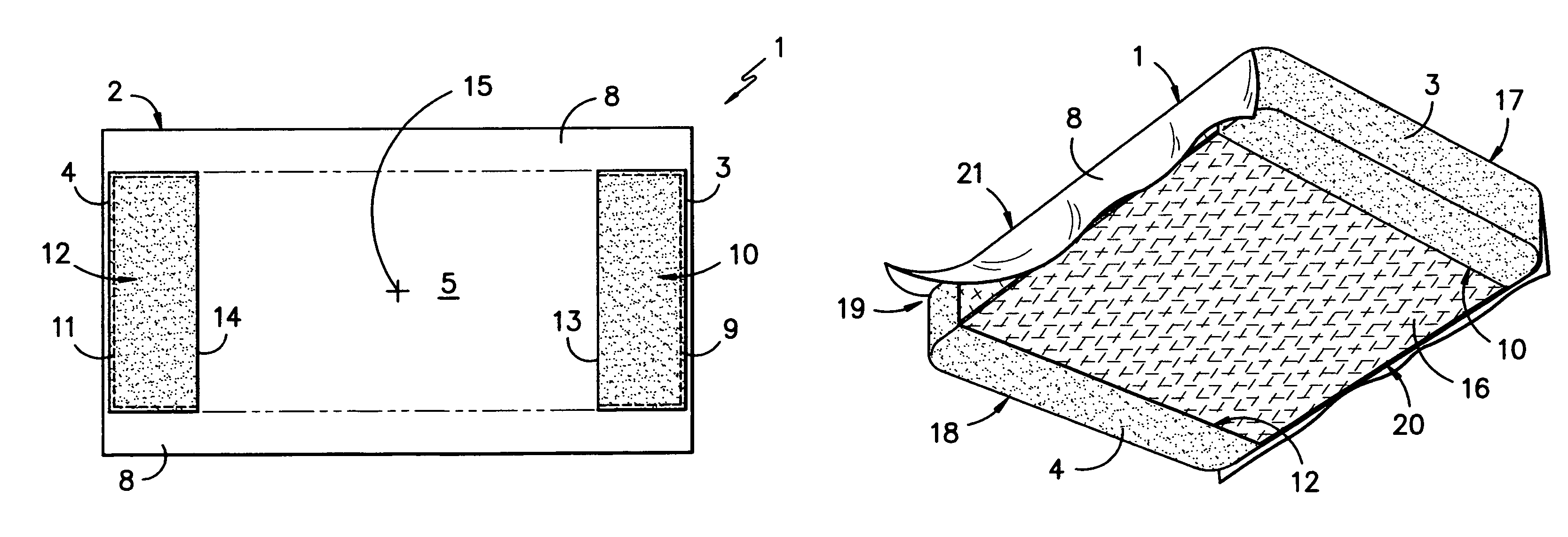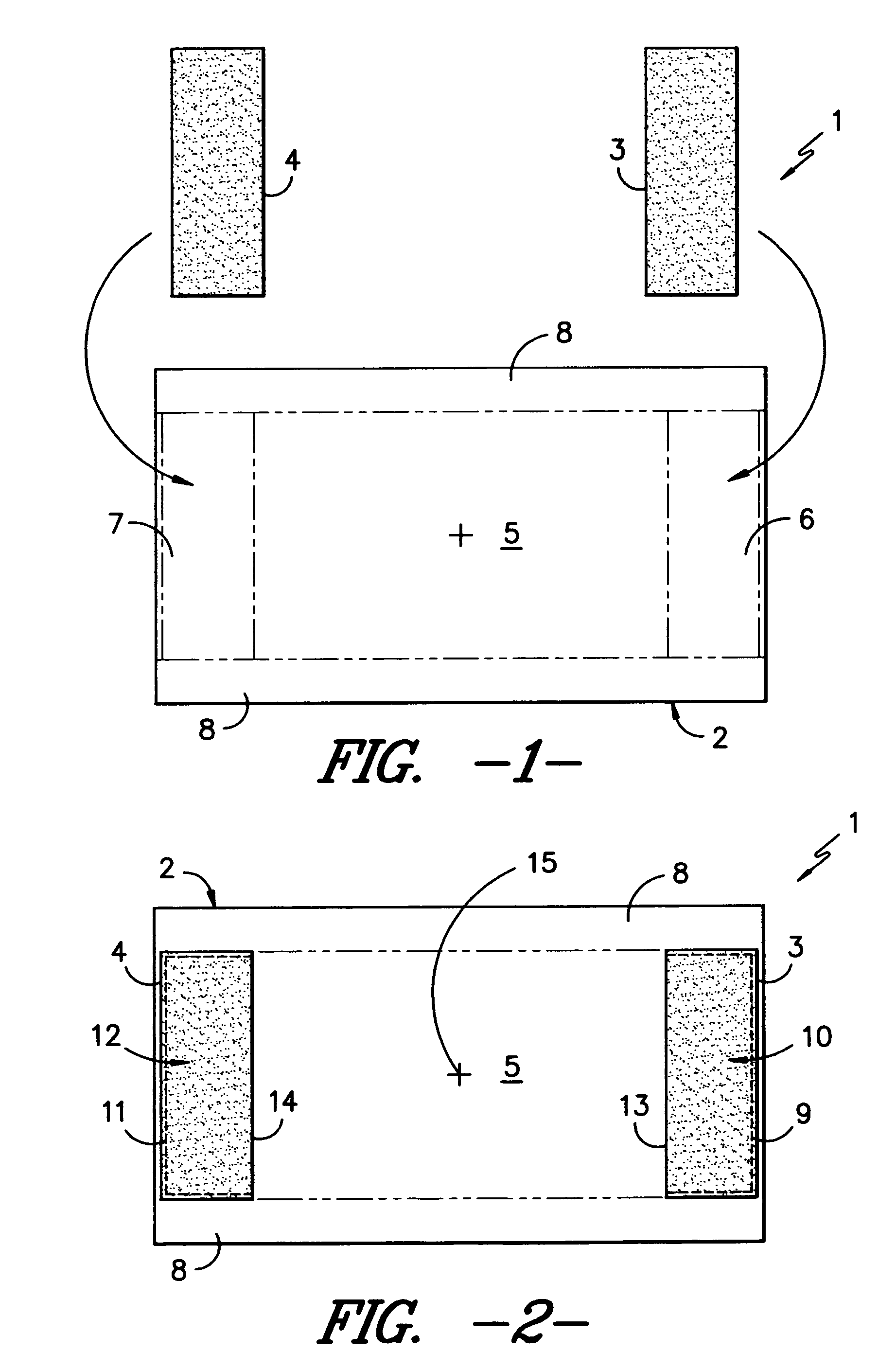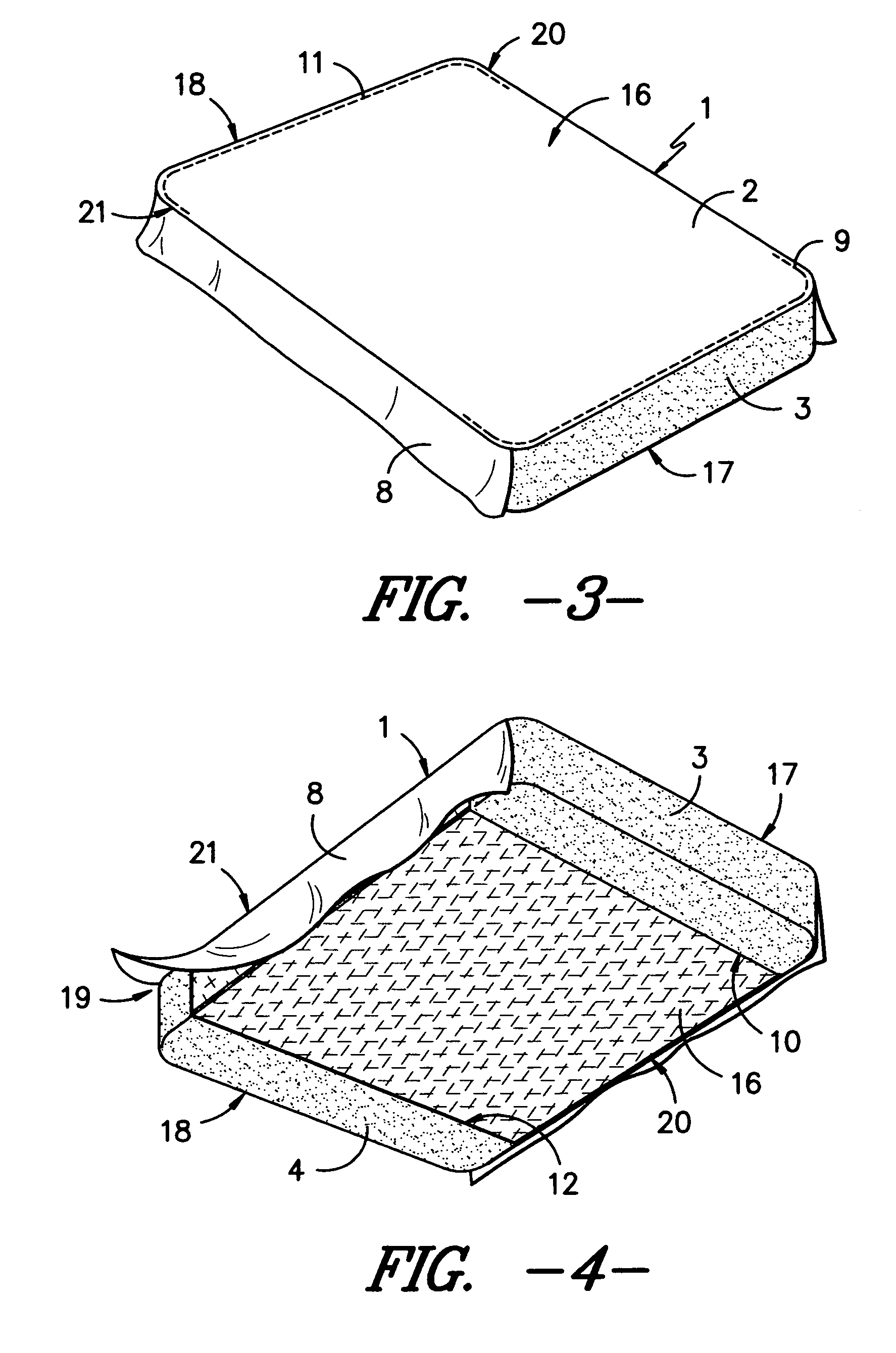Fitted bed covering
a bed covering and fitted technology, applied in the field of fitted bed coverings, can solve the problems of increasing manufacturing complexity, increasing costs, and requiring substantial force to stretch the fitted sheet over the side of the bed, and achieve the effect of reducing manufacturing steps, convenient folding of the fitted, and convenient conformation
- Summary
- Abstract
- Description
- Claims
- Application Information
AI Technical Summary
Benefits of technology
Problems solved by technology
Method used
Image
Examples
Embodiment Construction
[0032]Without limiting the scope of the invention, the preferred embodiments and features are hereinafter set forth. All of the United States patents, which are cited in the specification, are hereby incorporated by reference. The following detailed description refers to the fitted sheet embodiment of the fitted bed covering. It may be understood that the structure of the fitted mattress pad embodiment of the invention will be the same, except for the materials of construction of the upper sheet, that is, the upper sheet of the mattress pad will be padded.
[0033]FIG. 1 is an exploded view of the underside of fitted sheet 1, which is comprised of upper sheet 2 and panels 3 and 4. Upper sheet 2 is delineated by rectangular area 5, which includes and is delineated by strips 6 and 7. Upper sheet 2 is wider than rectangular area 5, and extends a distance equivalent to or greater than the thickness of a mattress to be covered, identified as drape 8.
[0034]FIG. 2 is a view of the underside o...
PUM
 Login to View More
Login to View More Abstract
Description
Claims
Application Information
 Login to View More
Login to View More - R&D
- Intellectual Property
- Life Sciences
- Materials
- Tech Scout
- Unparalleled Data Quality
- Higher Quality Content
- 60% Fewer Hallucinations
Browse by: Latest US Patents, China's latest patents, Technical Efficacy Thesaurus, Application Domain, Technology Topic, Popular Technical Reports.
© 2025 PatSnap. All rights reserved.Legal|Privacy policy|Modern Slavery Act Transparency Statement|Sitemap|About US| Contact US: help@patsnap.com



